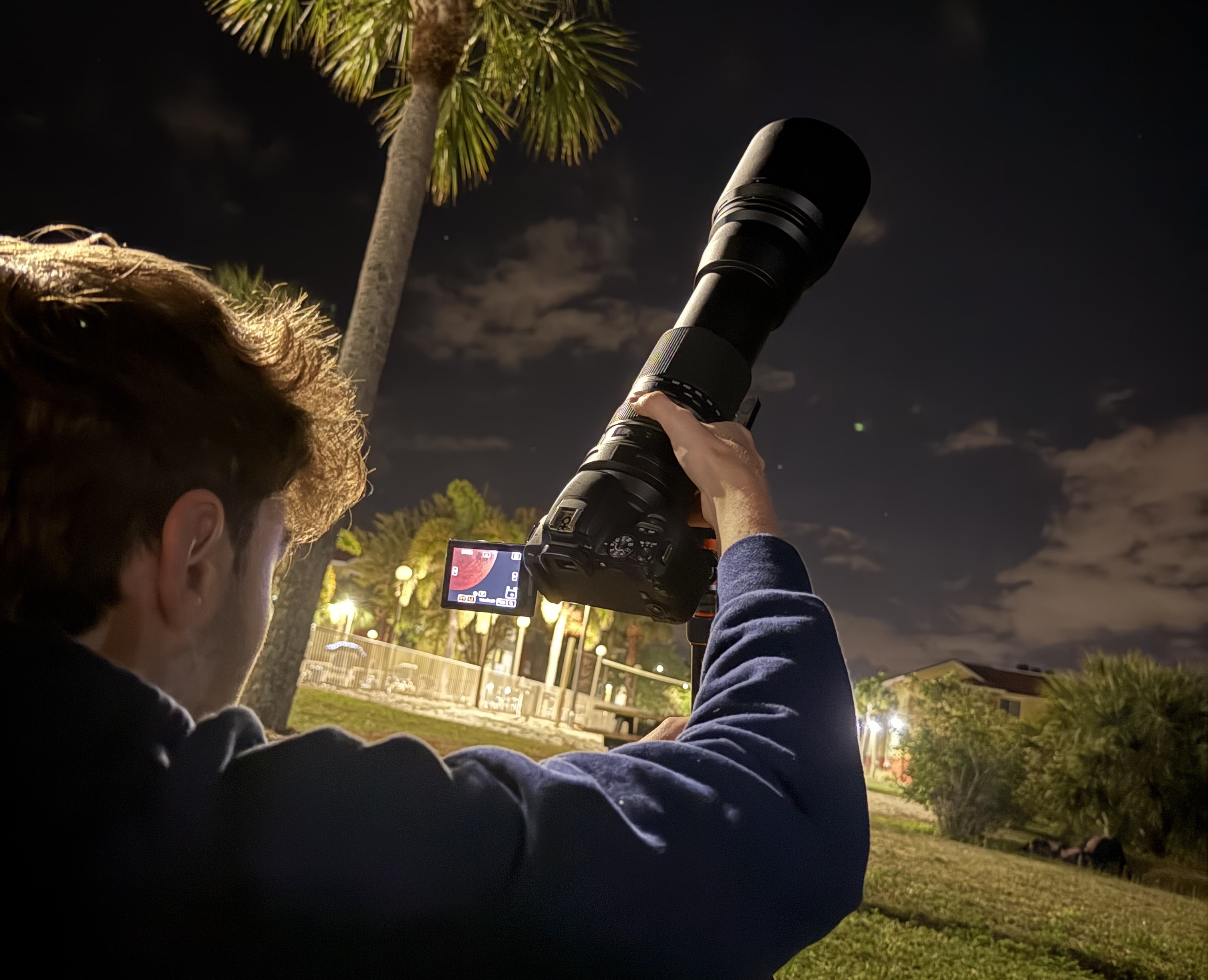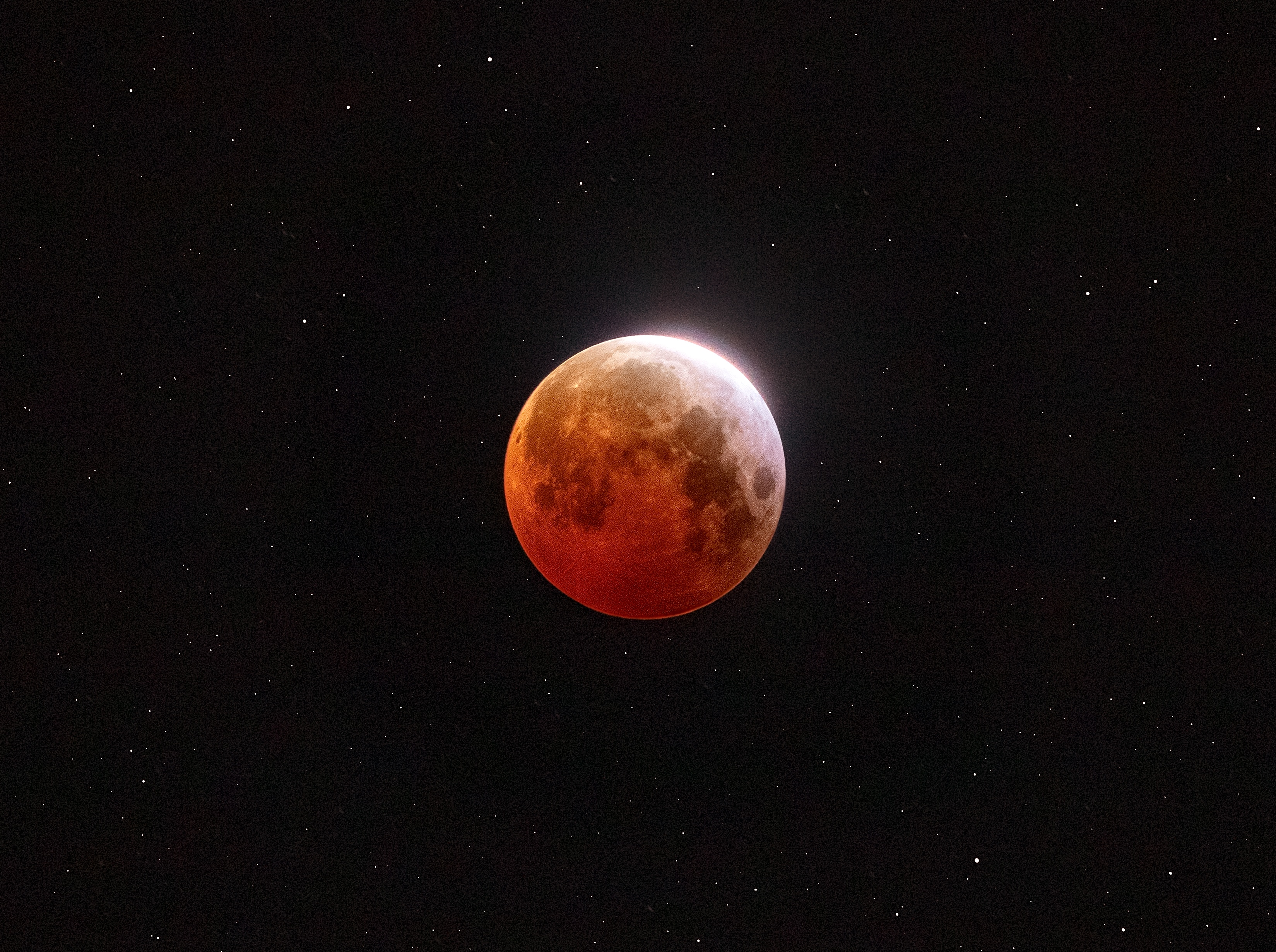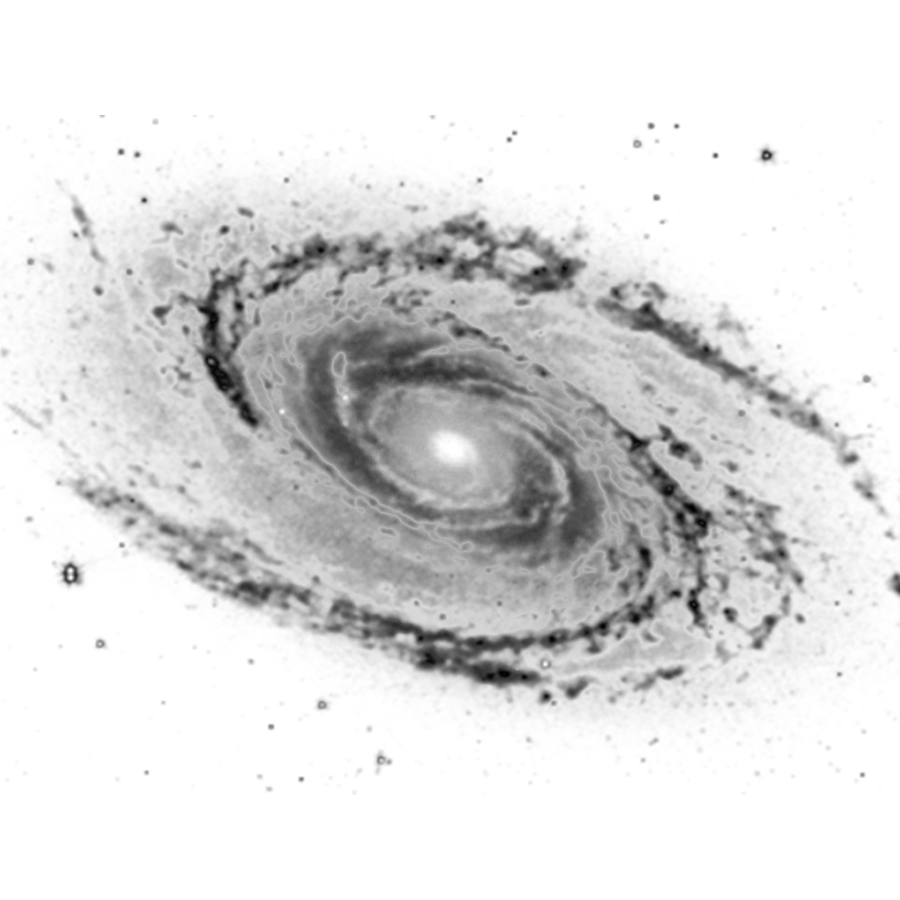Blood Moon on Spring Break
March 14, 2025
It has been quite awhile since I've posted anything astrophotography related on here. Truthfully, I've been very busy finishing my undergraduate career - in fact, during the week of this photo, I dedicated a sizable amount of my spring break time writing my senior undergrad honor thesis (more on this soon!), so I've gone dark on yet another astrophotography hiatus. The good news is that I'll be done with my undergraduate career very soon, leaving an entire summer to work on producing new photos (that is, until I start my PhD in the fall).
Alright, let's talk about this eclipse. As you all probably know, there was a major celestial event last year: the American Total Solar Eclipse of 2024. This year, we were treated to our first major eclipse since then: a Total Lunar Eclipse (TLE), the first since May 2022 (a close-up image of the 2022 eclipse is visible in the gallery of this website).
Total Lunar Eclipses occur during full moon phases, when the Earth positions itself between the Sun and the Moon, blocking the sunlight that reaches the Moon and giving it a red glow due to a phenomenon called Rayleigh Scattering. Essentially, sunlight passes through the edges of our atmosphere, photons with shorter wavelenghts collide with air molecules and are scattered away (this is why our sky is blue) while the photons with longer wavelengths (i.e., red light) pass through the atmosphere with minimal interactions and reach the Moon to make it appear red during a lunar eclipse.

Of course, you wouldn't see this red light normally - the sunlight is too intense during a full moon and drowns out the fainter red light. When most of this intense light is blocked out, however, you end up with a 'Blood Moon'. Blood moons (i.e., Total Lunar Eclipses) are relatively rare, albeit much less rare than their solar counterparts. While Total Solar Eclipses are only visible in narrow paths of totality and occur rarely geographically (e.g., the next American Total Solar Eclipse happens in 2044), Total Lunar Eclipses happen much more frequently (every few years) with much wider totality paths - approx. 45% of the globe can see them at a time!
So, now that the science lesson is out of the way, how do we actually capture one of these things? The overall method is very similar to full moon photography (really, a TLE is just a special case of a full moon) but with some extra strings attached. First, as we know from above, the red light of TLEs is much less intense than that of a full moon, which roughly translates to capturing at a more aggressive ISO or longer shutter speeds. For me, during totality, a shutter speed of 0.5s and a ISO of 1600 seemed to give good results. Your mileage will vary. Second, you are on a timer for this whole thing - the TLE will end eventually - but you have considerably more time than that of a Total Solar Eclipse, making the process much less stressful. The whole process took me about 35 minutes.
Additionally, you probably won't need any automated software to capture this thing (I STRONGLY recommend it for Total Solar Eclipses), but you will need some sort of remote shutter release or intervalometer. I, of course, forgot to bring either of these while packing, so I resorted to using capture timers on my camera. Note that using timers is cheaper than paying for a remote shutter release, but using them comes at the cost of your sanity: it takes much longer (and much more patience!) to actually capture a stable, high quality photo.
Okay, now let's talk focal length. This is a much more subjective area - really, it depends on what you're trying to capture. At a focal length of 600 mm, you'll get some great shots of the lunar disc close-up and resolve some finer features, but this comes at the cost of framing. If you want to make an HDR image (like I usually do) and capture some fainter stars in the background, you'll need to shoot at a much less aggressive focal length - somewhere around 200 mm - 400 mm should do the trick. Do be aware that the more zoomed you are, the more quickly the earth's rotation will blur your photos. Ideally, you'd use a star tracker to counter this, but given limited suitcase space, I opted for a simple tripod.
The only other major consideration to be aware of is the weather. TLEs are long events - much longer than a Total Solar Eclipse - when you include the penumbral, partial, and total phases. You'll want to make sure that the weather is cooperative for the full (approx. 4-6 hr) duration if you intend to create a compilation of all the phases. This was my original intention, but South Florida has proven time after time its ability to generate low-level clouds that go undetected by weather reports. At the start of the first penumbral phase, we were almost fully clouded out. despite weather reports forecasting clear skies. I opted to set my alarm for 2:24 AM and check outside during the start of totality - if it wasn't clear, I was going back to bed. Obviously, I lucked out and was able to capture (with impossibly clear skies), but sometimes, you may not be so lucky. It's what comes with the territory.
Finally, there's creating a High Dynamic Range (HDR) shot. I am an absolute sucker for these, as I'm sure you've seen with my moon photography. I outline the process fairly thoroughly here, but note that this is incredibly hard to pull off for TLEs due to the low light intensity. For me, stitching together two different exposures at ISO 1600 and shutter speeds of 0.5s and 1.3s, respectively, gave me the image below. Again, your mileage will vary. I'd recommend taking as many pictures at different exposure times as possible, then figuring out which ones work after the fact during post.
Lastly, I'll regurgitate the specs of the eclipse setup just so you know what I worked with. These photos were shot on a Canon SL2 with a Tamron SP A011 set to 400 mm at f6.3. It produced pretty nice images, and I'm very happy with this HDR image - especially since I've seen very few HDR TLE photos pulled off in convincingly well fashions. As always, the full quality photo is available below. Look out for some more astrophotography this summer.

